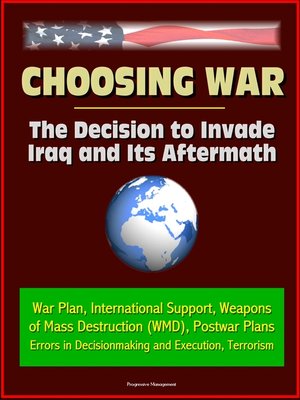Choosing War
ebook ∣ The Decision to Invade Iraq and Its Aftermath--War Plan, International Support, Weapons of Mass Destruction (WMD), Postwar Plans, Errors in Decisionmaking and Execution, Terrorism
By Progressive Management

Sign up to save your library
With an OverDrive account, you can save your favorite libraries for at-a-glance information about availability. Find out more about OverDrive accounts.
Find this title in Libby, the library reading app by OverDrive.



Search for a digital library with this title
Title found at these libraries:
| Loading... |
Professionally converted for accurate flowing-text e-book format reproduction, this study examines the Iraq war decision. The goal of this case study is to outline how the United States chose to go to war in Iraq, how its decisionmaking process functioned, and what can be done to improve that process. The central finding of this study is that U.S. efforts in Iraq were hobbled by a set of faulty assumptions, a flawed planning effort, and a continuing inability to create security conditions in Iraq that could have fostered meaningful advances in stabilization, reconstruction, and governance. It is arguable whether the Iraqis will develop the wherewithal to create ethnic reconciliation and build a coherent national government. It is clear, however, that the United States and its partners have not done enough to create conditions in which such a development could take place. With the best of intentions, the United States toppled a vile, dangerous regime but has been unable to replace it with a stable entity. Mistakes in the Iraq operation cry out for improvements in the U.S. decisionmaking and policy execution systems. In turn, these improvements will require major changes in the legislative and executive branches, as well as in interagency processes.
A comprehensive narrative of the war is beyond the scope of this project. Many key actors have not yet given their sides of the story. Given classification problems, the role played by intelligence and information operations can only be partially dissected. There is sufficient information, however, to make preliminary conclusions, especially since the focal point here is on the major decisions made at the Presidential, interagency, Cabinet department, and theater levels, all of which are areas of relatively rich documentation. The first four parts of this study will briefly analyze the context of the war and how the United States planned for it. The fifth section will analyze the decisionmaking process. The final section will discuss potential changes to our decisionmaking, organizational, and operational systems.






